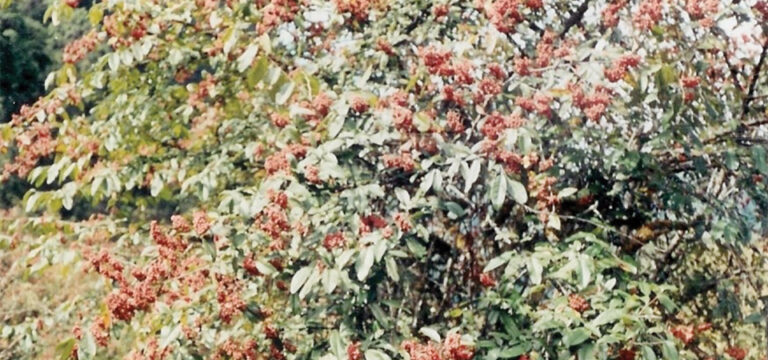
Locals in Rasuwa district produce juice from the fruits of a forest plant called ‘sea-buckthorn’. Though the uses of the medicional plant was identified earlier it was left without care.
Sea-buckthorn, commonly known as Dalechuk, which the local Tamangs call ‘Taru’, has medicional qualities in it though the fruit has a sour taste. It is found in thick high hilly forestes like Langtang.
There are two types of sea-buckthron in the forest in Langtang.
Baburam Shrestha, a local resident in Gosaikunda Rural Municipality-6, Dhunche began a juice business for the earnings from this plant. He collects fruits from the plant in Tatopani, Langtang and Bremdang for juice production.
Shrestha was inspired for the business after he attended a training for domestic entreprenurship development from the local bodies in the district. “I saw the opportunity of earning in this sector when I participated in the training. And I started my own business now,” he said.
According to him, fruits of sea-buckthorn has vitamin A, B and C in it. The foreigners and domestic tourists who visit Rasuwa like to bring such juice as gift to their loved ones. As the fruit tastes sour, locals also like to prepare pickles from this.
“We can produce jam, jelly, tea, wine and juice from the forest fruit because it has a huge demand,” he added. Shrestha won prizes for his juice production in several trade exhibitions in the country. A hotel entrepreneur Gyalbo Tamang said that so many people liked to visit Shrestha’s place seeking sea-buckthorn juice in summer. “They prepare tasty juice from the fruits with attractive packaging in various quanities and sizes,” he said.
Sea-buckthorn can adjust with minus 43 degress celcious minimum to maximun 40 degrees celcius temperature. It has different names in different places. People in Mustang call it Chichi, in Humla it is called Tora and in Dolpa it is called Tara-chuk.
According to a survry carried out by Langtang National Park covering 10,000 square kilometres area here some years ago 65 per cent plants were of sea-buckthorn in the forest and witt only 35 per cent others.
Source : TRN,






